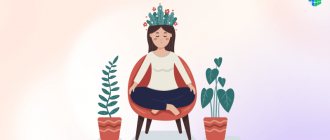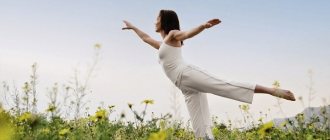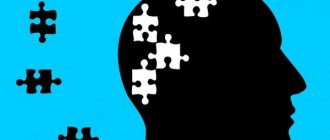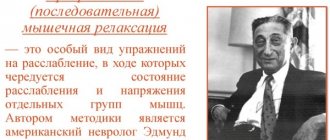The profession of a firefighter is associated with various stress factors. The uncertainty of the current situation, the constant expectation of danger, the need for continuous logical and psychological analysis of rapidly changing situations, the intense work of attention, and working with human grief have a powerful and ambiguous effect on the human psyche, requiring the mobilization of all his physical and mental capabilities to effectively solve the problems at hand.
A firefighter performs his professional duties while being in constant contact with people in stressful situations, colleagues, often with minimal work experience, representatives of interacting bodies and services, and journalists. Human communication in such situations often tests the psyche “to its strength”, creating conditions for the emergence of tension and disruption of emotional balance. All this often leads to dissipation of attention, transferring it to internal processes and states, reducing volitional readiness for immediate action and negatively affects the performance of official tasks.
People have learned to manage their body hygiene, muscle function, and thought processes more or less tolerably; however, many remain essentially powerless in the area of regulating their own emotions and passions. A person’s inability to regulate his moods negatively affects not only relationships with others (conflicts, incompatibility, hostility, etc.), but also the quality of performance of professional duties. A long stay in the grip of negative emotional states (anxiety, expectations of the unknown, guilt, dissatisfaction, anger, etc.), the inability to reduce the severity of the experience of adverse effects is also fraught with the fact that it has a destructive effect on the body, physical and mental state.
Even in ancient times, a connection was noticed between a person’s emotions and his physical condition. It was believed, for example, that the need to constantly suppress emotions destroys the heart; envy and anger affect the digestive organs; sadness, despondency, melancholy - accelerate aging; constant fear damages the thyroid gland; uncontrollable grief leads to diabetes. And prolonged nervous stress can destroy the strongest organism, so it is extremely important for every rescuer to be able to promptly notice the impact of stress factors, quickly and effectively “discharge” the resulting mental tension, relieve a negative emotional state, and reduce pain. No less important in his activities is the ability to instantly carry out volitional mobilization, to bring together all physical and mental forces. This can be achieved using methods of mental self-regulation.
For thousands of years, people have been looking for effective ways to influence themselves. Particularly valuable experience in this regard has been accumulated in Eastern martial arts schools. Here, the main condition for an adequate response to rapid changes in the situation, adaptation in any extreme situation, achievement, preservation of physical health, and rapid psychocorrection was considered to be the ability of a person to maintain his psyche in a state of “spirit like water” and “spirit like the moon.”
According to the masters, “a spirit like water,” like a calm surface, is capable of giving an exact mirror image of any object. But as soon as the wind blows, small ripples will destroy the reflection and distort it beyond recognition. Once a person succumbs to fear, anger, and excitement, he will lose the ability to clearly control the situation and will find himself defenseless in the face of danger.
Martial arts experts claimed that the “moon-like spirit” reveals any enemy actions, any gap in his defense. But behind the rolling clouds the moonlight dims. Excessive emotionality leads to loss of composure and self-control, giving rise to inappropriate situations of action.
The ideal state of a fighter was considered to be an “empty consciousness”, in which the warrior “does not expect anything and is ready for anything, at every moment of what is happening he is not connected with the past, does not depend on the future and lives only in the present, perceiving it with his whole being.” For a person with an “empty consciousness,” personal well-being and mental balance are elevated to an understanding of “natural harmony and justice,” and his actions take place, as it were, “beyond good and evil,” “life and death.”
Various methods have been used to achieve this state of mind. Among them, complex techniques were used: auto-training, active meditation, as well as fairly simple breathing techniques, gymnastics, and psychotechnical exercises. Many of them are still widely practiced today in the system of psychophysical training in the martial arts schools of Kyoko-shin-kai, Choi, Aikido, etc.
Warriors in ancient Sparta and in some Indian tribes of North America underwent a good school of mental self-regulation. A unique system of self-control has been developed in the teachings of yogis.
It is known that a person is able to influence himself using three ways:
a) changes in skeletal muscle tone and respiration;
b) active inclusion of ideas and sensory images;
c) use of the programming and regulatory role of the word.
Ways to regulate emotional states
The first self-influence technique we will consider is breathing control.
Breathing is not only the most important function of the body, but also an effective means of influencing muscle tone and emotional means of influencing the centers of the brain.
Slow and deep breathing reduces the excitability of nerve centers and promotes muscle relaxation.
Frequent breathing, on the contrary, ensures a high level of body activity.
Most people in everyday life use only shallow breathing, when only the tops of the lungs are filled. Full breathing, as stated in the “pranayama” section of the teaching on breathing, includes filling the lower, middle and upper parts of the lungs. By changing the type, rhythm of breathing, the duration of inhalation and exhalation, a person can influence many functions, including mental ones.
To start mastering, you can master 2 types of breathing: lower (abdominal) and upper (clavicular).
Lower breathing is used when it is necessary to overcome excessive anxiety, overcome anxiety and irritability, and relax as much as possible for quick and effective rest. Lower breathing is the most productive, because... The largest number of pulmonary vesicles (alveoli) are located in the lower parts of the lungs.
Abdominal breathing is performed as follows: while sitting or standing, you need to relieve tension from the muscles and focus your attention on breathing. Then 4 stages of a single breathing cycle are performed, accompanied by an internal count to facilitate learning.
At the count of 1-2-3-4, a slow inhalation is carried out, while the stomach protrudes forward, the abdominal muscles are relaxed, and the chest is motionless. Then, for the next 4 counts, you hold your breath and exhale smoothly for 6 counts, accompanied by pulling the abdominal muscles towards the spine. Before the next inhalation there is a pause of 2-4 counts. It should be remembered that you need to breathe only through your nose and as smoothly as if a fluff was hanging in front of your nose at a distance of 1 - 15 cm, then it should not flutter. After just 3-5 minutes of such breathing, you will notice that your state has become noticeably calmer and more balanced.
If you need to cheer up after monotonous work, relieve fatigue, and prepare for vigorous activity, then upper (clavicular) breathing is recommended.
It is carried out by vigorously taking a deep breath through the nose, raising the shoulders and exhaling sharply through the mouth. In this case, there are no pauses between inhalation and exhalation. After just a few cycles of this breathing, you will feel a feeling of “goosebumps” on your back, freshness, and a surge of vigor.
The following exercises can be used:
- "Calming Breath"
In the starting position, standing or sitting, take a full breath. Then, holding your breath, imagine a circle and slowly exhale into it. Repeat this technique four times. After this, inhale again, imagine a triangle and exhale into it three times. Then exhale into the square twice in the same way. After completing these procedures, you will definitely feel calm.
- "Exhaling Fatigue"
Lie on your back. Relax, establish slow and rhythmic breathing. Imagine as clearly as possible that with each inhalation the lungs are filled with vitality, and with each exhalation it spreads throughout the body.
- "Yawn."
According to experts, a yawn allows you to almost instantly enrich the blood with oxygen and get rid of excess carbon dioxide. The muscles of the neck, face, and mouth that tense during yawning accelerate blood flow in the vessels of the brain. A yawn, improving blood supply to the lungs, pushing blood out of the liver, increases the tone of the body, and creates an impulse of positive emotions. It is said that in Japan, workers in the electrical industry yawn in an organized manner every 30 minutes.
To do the exercise, you need to close your eyes, open your mouth as wide as possible, and tense your oral cavity, as if pronouncing a low “oo-oo-oo.” At this time, it is necessary to imagine as clearly as possible that a cavity is forming in the mouth, the bottom of which is descending. A yawn is performed while stretching the entire body. The effectiveness of the pharynx is enhanced by a smile, which enhances the relaxation of the facial muscles and creates a positive emotional impulse. After a yawn, the muscles of the face, pharynx, and larynx relax, and a feeling of peace appears.
- "Cleansing Breath"
Performed in any comfortable position - standing, sitting, lying down. Helps quickly relieve fatigue, cleanses the blood of toxins, and increases the body's resistance.
After a full inhalation, exhalation is carried out in small portions through a narrow gap between the lips, outwardly reminiscent of attempts to extinguish the flame of a candle. Each subsequent portion should be smaller than the previous one. At first, the number of repetitions should not exceed three, and later you can increase it to ten.
- Cleansing breathing with the sound “Ha” has a tonic effect, helps relieve nervous tension, and relieve feelings of internal anxiety.
Starting position – standing, feet shoulder-width apart. With a slow inhalation, raise your relaxed arms above your head, hold your breath for a few seconds and imagine yourself standing on the edge of a deep abyss, holding in your hands a vessel containing everything that darkens life - sorrows, fears, physical ailments. Lean forward a little (with a straight back) and with a sharp movement throw the vessel into the abyss with the sound “Ha”. The sound should not be pronounced, but formed by the air leaving the chest. After exhaling, remain tilted for some time, swinging your arms, until you feel the desire to inhale. Repeat 2-3 times.
- "Blacksmith's bellows."
An exercise that has a refreshing effect on the entire body, increasing performance. Prevents and treats nasopharyngeal diseases.
Sitting in a comfortable position, take 10 quick and strong inhalations and exhalations. Exhalations are carried out due to the work of the diaphragm. After completing the exercise, take a full breath and hold your breath for 7-10 seconds. to avoid hyperventilation. Repeat the entire cycle 3-4 times.
- "Rhythmic breathing through one nostril." Recommended for loss of strength and mental fatigue. Normalizes the functioning of the respiratory center. Performed after preliminary mastery of full breathing:
- after the next exhalation, close the left nostril with the middle finger of your left hand and inhale through the right nostril;
- hold your breath as you inhale, then close your right nostril with the thumb of your right hand and, opening the left, exhale;
- after holding your breath while exhaling, inhale through the left nostril;
- after holding your breath, close your left nostril with the middle finger of your right hand and, releasing the right nostril, exhale;
- hold your breath while exhaling.
Repeat the described breathing cycle 5 times. The duration of inhalation, exhalation and breath-holding during inhalation and exhalation is 8 seconds.
Exercises based on breathing concentration
(Before the exercises: imagine an inflatable balloon or ball, remember how a thin stream of air comes out of it if you untie the balloon or open the ball. Try to mentally see this stream of air. We will imagine each of your exhalations as the same stream of air coming out of the points which we will open).
- Focus on your breathing. Breathe as usual; Notice your inhalation and exhalation. You can say with your inner voice: “Inhale,” “Exhale.” (30 sec).
- Feel your knees. Inhale. Exhale again through the points that you mentally “open” on your knees. (In fact, we exhale through our nose, but we imagine that we exhale through our knees). Inhale and exhale through the points on your knees. (30 sec).
- Feel your spine. Mentally “walk” along it from top to bottom. Find a random point at the very bottom of the spine. Inhale through your nose, and exhale mentally through the point that you yourself identified on the spine at the very bottom. Imagine a thin stream of air emerging from this point when exhaling (30 sec).
- “Climb” up the spine. Find a point in the middle of your spine. Inhale. Exhale through a point in the middle of the spine. (30 sec). We mentally try to “draw” our exhalation.
- Raise your mind to the cervical spine. Inhale. Exhale through a point on the cervical spine. Breathe like this. (30 sec)
- Feel your arms and hands. Inhale and exhale again through the points on the hands (30 sec).
- Mentally rise to your elbows. Inhale and exhale through the points on the elbows. Breathe like this, mentally imagining the air coming out (30 sec).
- Raise your mind to your shoulders. Find the points through which we will “exhale” on both the right shoulder and the left. Inhale and exhale through the points on the shoulders. Streams of air go up. We breathe, imagining these streams (30 sec).
- Find the point between the eyebrows. Inhale and exhale through the point between the eyebrows. (30 sec).
- Exhale through the point at the top of the head. (30 sec).
- Exhale the next time through all the points we mentioned. Breathe like this. Feel how the air passes through all the pores, through the entire skin (30 sec). Breathe calmly. Stay in this state for as long as you need. Come back refreshed.
(These exercises are useful for relaxation after strenuous work.)
Exercises for concentration
Exercise 1.
- Sitting with eyes closed. You give yourself the command: “Right hand!” and try to focus on your right hand.
- After 10-15 seconds, the next command: “Left hand!”, then: “Right foot!” etc., focusing on different volumes of the body.
- Gradually you should move on to smaller volumes - a finger, a nail phalanx - and to more subtle sensations, for example, the pulse beating at the tip of a finger.
- At the end, the whole body is in the field of attention, observed calmly, against the backdrop of general relaxation.
Exercise 2.
Extend your arms at chest level and then slowly bring them together, keeping your palms parallel.
After several repetitions, the palms begin to “spring”, encountering the elastic resistance of the environment
You need to “blind” a ball from this invisible “field substance” and, helping with your hands, “absorb” it into yourself in the solar plexus area.
Assess the difference in conditions: before and after exercise.
Exercise 3.
Performed in pairs. One of the participants closes his eyes, and the second, taking his hands, slowly leads him around the room. It is very important that the “blind” person feels safe, completely trusting his “guide”.
The “guide” leads his follower along the wall, inviting him to evaluate the difference in the perception of space: to his left and to his right.
Swap roles in pairs. Focus on the mutually compensating role of the visual, auditory and kinesthetic analyzers.
Note: all concentration exercises should be done with a fresh mind, preferably 2-3 hours after eating. If there is any discomfort - headache, deterioration in emotional state - stop doing the exercise.
Formation of skills to relax the muscles of the face and hands
It is these parts of the body that have the largest representation in the cerebral cortex, and it is in these parts that muscle tension most often occurs, i.e. muscle groups are chronically in increased tone even when a person is relaxed. Constantly sending activating signals to the brain, they do not allow the psyche to rest, including during sleep, threatening a person’s internal balance. Therefore, it is important to learn to relax all muscle groups at least for a short time.
The work of the facial muscles begins with tension and relaxation of the forehead muscles (mask of surprise, mask of anger), and then the muscles of the cheeks, chewing muscles, and neck muscles.
Facial exercises:
- Stretch your lips in a smile as far as possible, similar to Pinocchio’s smile. Return to starting position. Repeat 5-7 times.
- Puff out your cheeks. Exhale the air, mentally inflating the balloon. Repeat 5-7 times.
- Place your hand on your forehead. Trying to raise your eyebrows and eyes upward without wrinkling your forehead. Repeat 5-7 times.
- Close eyes. Close your eyes tightly. Feel that it has become dark. Cover your eyes with your hands. Feel that it has become even darker. Imagine in front of you a dark bottomless well, black velvet, something black. To feel that it has become even darker, to see, to feel this darkness. Be in it. Remove your hands from your face. Feel that it has become lighter. Without opening your eyes, feel that it has become lighter. Slowly open your eyes. (Going back is twice as slow). The exercise is performed 1 time.
- Make swallowing movements.
- Raise the corners of your lips up, smile, feel how pleasant sensations from the corners go to your ears.
- Run your hand over the neck muscles and, if they are tense, make several tilts and rotational movements with your head, massage your neck. Then lightly stroke the muscles from the shoulder to the ear, and rub the behind-the-ear tubercles with your fingertips. This improves blood flow to the head and helps relieve nervous tension.
If the clamp cannot be removed, it can be smoothed out using light self-massage in a circular motion with your fingertips. The end result is the achievement of a “relaxation mask”: the eyelids are lowered, all the facial muscles are smoothed, the face becomes somewhat sleepy, indifferent, the lower jaw of the face is lowered, the tongue is slightly pressed against the teeth, as if about to say “yes”.
Why is it important to deal with stress?
In general terms, you already understand the harm that chronic stress can cause. Just in case, let us clarify further that it is necessary to fight against distress or negative stress that is harmful to health. This is what we will mean further when we talk about stress management.
So, what else can be dangerous about negative stress? Doctors identify a number of consequences that chronic stress can lead to [O. Izarovskaya, 2012].
What does stress lead to:
- Release of adrenaline and increase in blood sugar levels.
- Nervous tension and headaches.
- Constant anxiety.
- Sleep disturbance and insomnia.
- Loss of appetite (increased, decreased).
- Chronic fatigue.
- Panic attacks.
- Skin rashes.
- High blood pressure.
- Nervous tics.
- Heart diseases.
- Stomach ulcers and other digestive disorders.
- Depressive disorders.
- Decreased performance.
- Problems in relationships with others.
- Cognitive impairment.
So, in addition to the actual physical reactions under stress, problems may begin with concentrating, remembering important information, analyzing current events and making the right decisions. Of course, stress manifests itself individually in each person, and it is not at all necessary that all signs and consequences of stress will appear immediately. However, even a cursory glance at this impressive list will be enough to understand how any of the listed items can poison your life, even if there is only one.
Today, the ability to manage stress is more important than ever. There are more and more sources of stress: financial crises, problems at work, quarrels within the family, the need to sacrifice sleep in order to do more things, the inability to have a normal lunch and at least a little rest during the day, traffic jams, information noise, unhealthy self-esteem [O. Izarovskaya, 2012].
Add to this list the pandemic and its consequences in the form of endless lockdowns, the need to adapt to remote work and study, giving up usual entertainment, traveling abroad, going to theaters and concerts, and you will get an inexhaustible source of stress for every day.
An online survey conducted by the 1st St. Petersburg Medical University and the Center for Psychiatry and Neurology named after. V. M. Bekhterev, convincingly showed that the greatest stress factors in 2022 were fear for the life and health of loved ones, self-isolation and worries about the lack of specific drugs for the treatment of COVID-19.
As a result of this online survey, about two thousand people were interviewed, and detailed data is contained in the final review “Psychological reactions of the population as a factor of adaptation to the COVID-19 pandemic” [M. Sorokin et al., 2020]. Note that even the title of the review places emphasis on the adaptive mechanism of stress in conditions of danger and changed circumstances.
Similar reactions are observed in Europe. Thus, according to a survey conducted by the sociological institute Forsa and commissioned by Techniker Krankenkasse, every second resident of Germany in 2022 experienced stress due to the risk of infection and the consequences of restrictions associated with the pandemic. Moreover, it was noted that young people suffered much more often from stress due to the restrictions imposed than pensioners.
It was young people who were most “stressed” by the inability to communicate normally with friends and actively spend their leisure time. More detailed information about the survey results can be found in the final report entitled Corona-Stress: Jeder Zweite fühlt sich stark belastet (“Corona-stress: every second person feels burdened” [Techniker Krankenkasse, 2020]. Is it possible to manage stress in these conditions and how to do this? Let's see.
Sound motor exercises
Such exercises use sound in combination with singing to vibrate certain organs.
It is believed that the sound “i” vibrates the pharynx and larynx, the sound “s” vibrates the brain, “a” and “o” - the chest area, “e” and “ou” - the lungs, heart, liver, stomach.
Sound vibration has a beneficial effect on all organs, especially the cardiovascular system, and enhances the body’s protective and adaptive reactions.
To relieve mental stress and negative emotional states, it is recommended to hum the sound combination “m-pom-peeee”: “M - pom” is short, and “pee-ee” is extended.
It is known that facial muscles can influence a person’s emotional mood; Therefore, it is necessary to accustom yourself to constantly maintain a kind, pleasant expression on your face.
To learn how to relax muscles, you need to have them, therefore, daily physical activity increases the effectiveness of muscle relaxation exercises.
The next self-influence technique is to control the tone of skeletal muscles.
The ability to relax, relieve muscle tension that arises under the influence of mental stress, allows the body to get complete rest, quickly restore strength and relieve neuro-emotional tension. As a rule, it is not possible to achieve complete relaxation of all the muscles of the body at once. Therefore, it is recommended to sequentially relax various muscle groups in compliance with a number of rules.
Firstly, the task of the exercise is to realize and remember the feeling of a relaxed muscle in contrast to its tension.
Secondly, each exercise consists of 3 phases: “strain – feel – relax.”
In the initial phase, the tension of a selected muscle group increases smoothly, then the maximum tension is maintained for several seconds until the muscles tremble, and the tension is released abruptly (relaxation phase). It must be taken into account that a completely relaxed muscle seems to “sag”, and a feeling of heaviness arises in it.
Thirdly, slow tension corresponds to slow inhalation, relaxation synchronized with a free full exhalation.
Each exercise is repeated 3-4 times.
Skeletal muscle is one of the most powerful sources of brain stimulation. Muscle impulses can change its tone over a wide range. It has been proven that voluntary muscle tension helps to increase and maintain mental activity and inhibit undesirable reactions to an existing or expected stimulus. To relieve irrelevant or excessive mental activity, on the contrary, muscle relaxation (relaxation) is necessary. Experiencing negative influences, the body mobilizes to the maximum for intense muscular work. So you need to present him with such work. Sometimes 20-30 squats or the maximum possible number of push-ups on the floor will help relieve mental stress.
In other cases, differentiated auto-training of the “express method” type will be more effective. It consists of maximally relaxing those muscles whose work is not currently required. So, if when walking, mainly the muscles of the legs are tense, then you need to relax the muscles of the face, shoulders, and arms. While sitting, you should relax the muscles of your face, arms, shoulders, and legs.
Let's get acquainted with one of the unique methods of managing internal resources to unlock abilities, overcome stress and psychological barriers.
Technique 1. “Divergence of hands.”
Hold your hands comfortably and give a mental command to your hands so that they begin to move apart as if automatically, without muscle effort.
Choose a comfortable look for yourself that will help you achieve this movement.
Imagine, for example, that they repel each other like unipolar magnets, or choose some other image. Whatever is more convenient. You can start by spreading your arms with a normal mechanical movement, and then with an ideomotor movement.
In order for your will to “work” and your hands to begin to move apart, you need to remove the obstacle between the will and the body (create a connection between the will and the body), i.e. find a state of inner balance within yourself.
To do this, you need to relax internally and feel comfortable. Do what is most pleasant, go through the options (tilt or bow your head, take a deep breath or exhale, hold your breath for a moment, etc.), the main thing is to find this feeling of inner comfort, in which your will will begin to influence the automaticity of movement.
Can be done with eyes open or closed. If your hands get tired, lower them, shake them, then try again.
Technique 2. “Convergence of hands”.
Spread your arms to the sides in the usual way, and now tune in to their automatic reverse movement towards each other.
Repeat it several times. Try the first technique - arms to the sides.
Repeat the divergence and convergence of the hands several times, achieving continuity of movement. At the moment when your hands seem to get stuck, you can push them slightly. Or smile, or sigh. A smile relieves tension. If the desired state of internal relaxation has arrived, stay in this state to remember it.
Technique 3. “Levitation of the hand.”
Hands down. You can look at your hand, then you need to do it continuously, or close your eyes. Tune in so that your hand begins to rise, “float up”. Remember how astronauts’ arms and legs “float” in zero gravity? If that doesn't work, go back to techniques 1 and 2.
When the hand begins to float up, a lot of new and pleasant sensations arise. For the first time, it will cause a sensation so unexpected that it involuntarily makes you smile.
Technique 4. “Flight”.
If the hand begins to “float up”, then after a few seconds give the opportunity for the same “float up” for the second hand.
Let your hands “float up”. Let them rise like wings.
Help yourself with pleasant imagery. Imagine that your hands are wings! Wings carry you!
You are high - high above the ground! Clear sky! Towards the warm sun."
Allow yourself to open to your breath. Allow yourself to breathe freely. Allow yourself to feel the state of flight.
Technique 5. “Self-oscillations of the body.”
When performing Key Techniques, along with relaxation, the phenomenon of self-oscillation of the body usually occurs. This is natural - when a person is relaxed, he sways.
When the body self-oscillates, you can lower your arms and simply sway on the waves of this harmonizing biorhythm, like a child sways on a swing. You can close your eyes or leave them open: whichever is more pleasant.
This technique with self-oscillations of the body also trains coordination. A person with good internal coordination is more resistant to stress, less susceptible to external influences than others, has greater independent thinking, and quickly finds a way out in the most difficult situations. Therefore, exercises aimed at developing coordination also build resistance to stress.
Technique 6. “Head movements.”
Standing or sitting, we lower our heads, relaxing our necks, or throw our heads back, whichever is more pleasant, and, remembering the experience with ideomotor movements of the hands, we cause ideomotor turns of the head in a convenient direction.
If this does not work, we mechanically rotate our heads in a pleasant rhythm along the line of pleasant turning points. This is a rhythm in which you want to continue the movement, and the neck tension eases.
You can find a moment when you can kind of let go of your head, and then it will go on ideomotor - automatically.
It is necessary to avoid painful or tense points, and if they appear, they should be lightly massaged. When you find a pleasant turning point when moving your head, sometimes you want to leave your head there. A pleasant turning point is a relaxation point.
You can help yourself find relaxation and use the movement of your eyeballs, horizontal or vertical, to find what feels more pleasant to you.
If you perform these techniques before going to bed, then when you leave the state of self-regulation, tune in to a pleasant sleep, leave the procedure with a relaxed feeling, with drowsiness, with the desire to sleep.
The “Relaxation by Contrast” exercise will help discharge negative emotional states and maintain a cheerful mood. Here relaxation is achieved through tension. You need to tense, for example, your hands, and then relax them as much as possible.
What is self-regulation and stress?
What are self-regulation and stress and how are they interconnected? Self-regulation is the ability of any system in general and the human body in particular to adapt to external circumstances and neutralize negative impacts by activating internal resources.
Stress is precisely the totality of the body’s adaptive reactions, thanks to which we overcome difficult sections of life’s journey. In primitive society, stress at the sight of a predator allowed the body to mobilize and make the right decision: run away, hide, or try to kill a potentially dangerous animal.
In today's realities, there is no need to fight wild animals, but you need to be able to quickly come up with an answer to a tricky question or find a way out of a difficult life situation. Such stressful situations are accompanied by the release of adrenaline, under the influence of which glycogen is broken down in the liver and converted into glucose, which leads to an increase in blood sugar levels.
A short-term effect of this kind is quite safe and even useful for training the body’s systems. But prolonged exposure to stress is fraught with dangerous physiological changes in the state of systems and organs.
There are two types of stress:
- Eustress is short-term mobilizing stress or stress caused by positive emotions.
- Distress is negative stress that is harmful to health.
How to manage stress if it is not just a mental state, but a complex of physiological reactions occurring in the body? And how will self-regulation of behavior help this? Interest in this topic has existed for a long time, both among ordinary people exposed to stress, and among doctors, psychologists, physiologists and everyone who is in one way or another connected with the human sciences.










